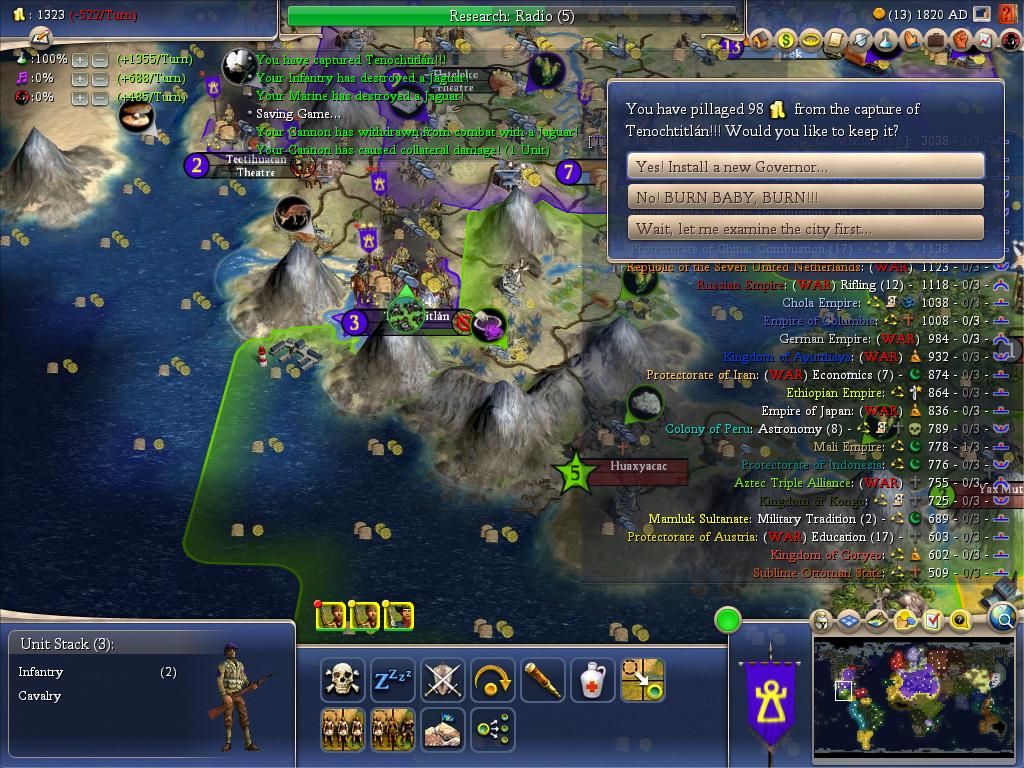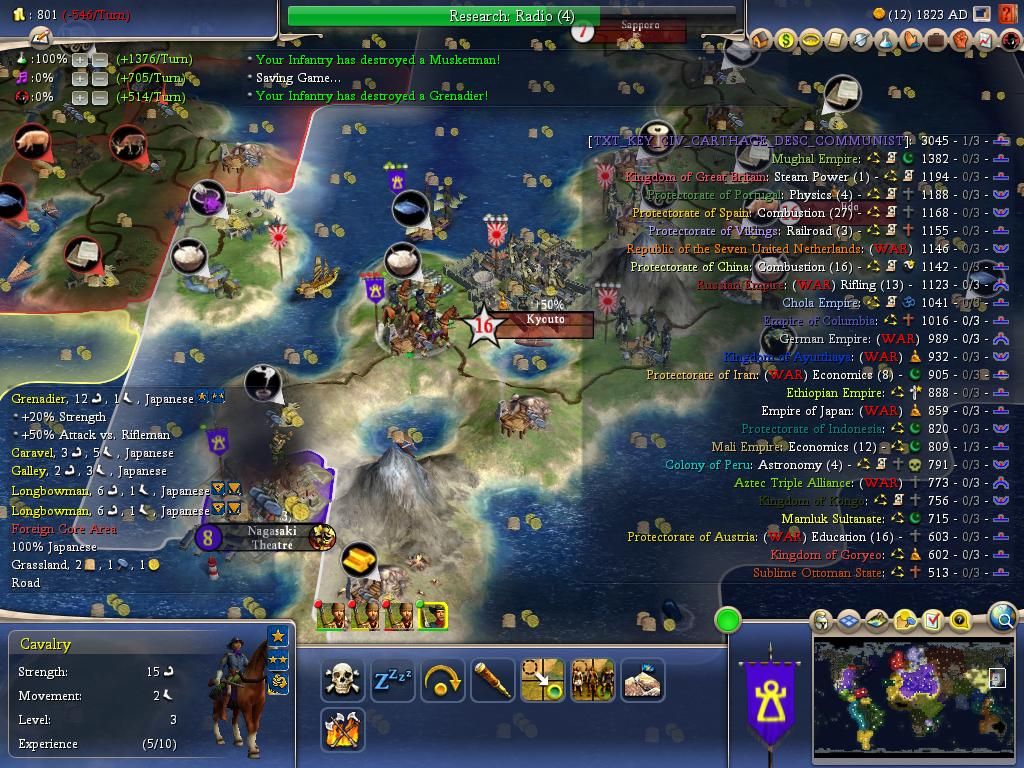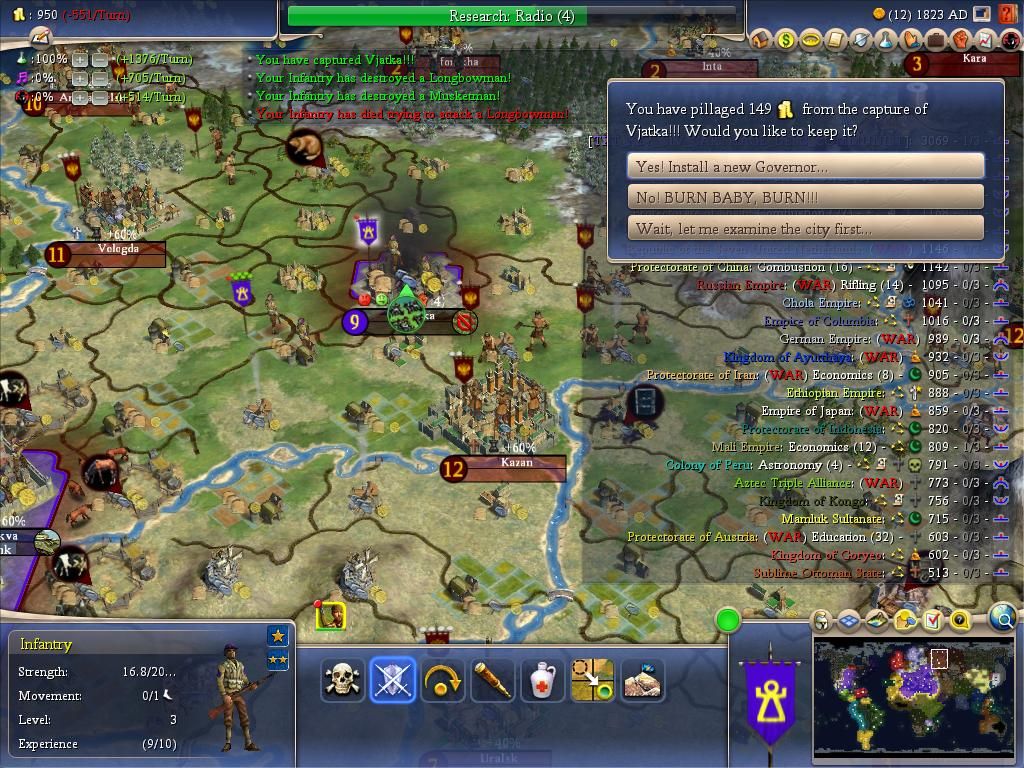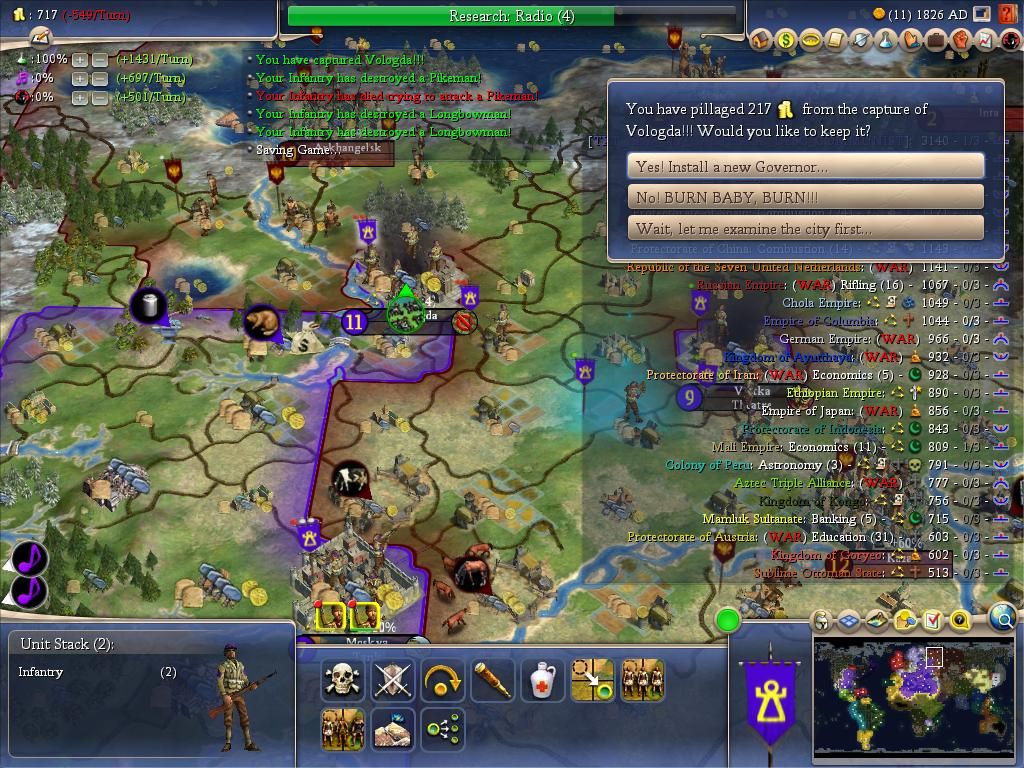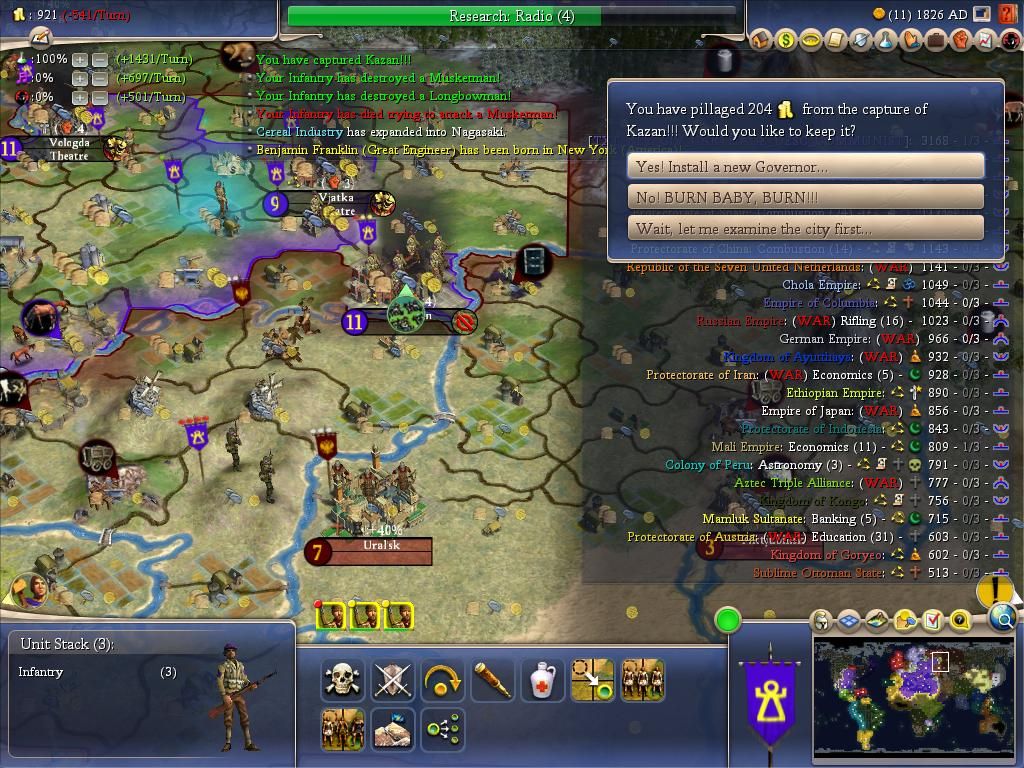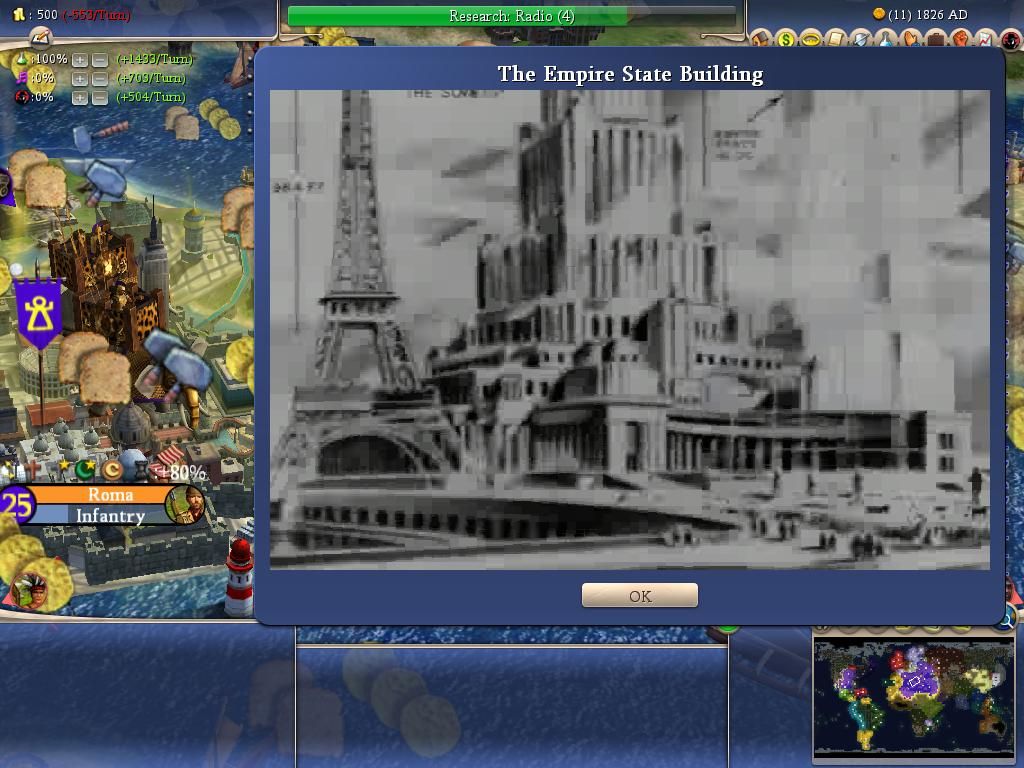Under the directive of Hannibal, the three branches of the Punic Armed Forces;
the European contingent, the Far Eastern contingent and the New World forces were filled with renewed vigor to end the anti-Punic Alliance with a vengeance.
The Punic Army in the New World continued to advance at a ferocious pace.
In the summer of 1820, Punic soldiers entered the Aztlan capital of Tenochitlan,
forcing the immortal Montezuma to flee and set up a provisional capital down south in the canal city of Huaxacayac along with stranded Japanese and Third Roman merchant marines.
In Japan, a probing assault was carried out against the capital of Kyouto.
Although Hannibal had meant for it to initially be a brief scouting action against
the Japanese, the field commanders on the ground achieved remarkable success,
annihilating two full companies of Japanese gunpowder troops in a lightning raid.
The scouting force was not strong enough to take advantage of this and retreated,
but the severity of the defeats inflicted on the Japanese Home Guard shook Japanese morale greatly.
In the Third Rome, Hannibal was cautious as to not strike too deeply with the onset of winter.
Craftily, he focused on stirring up internal dissent between Third Roman factions instead, and had his own troops wait until summer to resume their advance.
Proving Hannibal had the chops for management along with strategy, Punic soldiers
blitzed Russian positions across a wide front at the advent of summer and seized
four important industrial centers to the Russian war effort in tandem.
Although the state was in the midst of total war, civic functions were married together with military needs in a marriage of practicality.
The Empire State Building of Roma was built to house the nation's growing intelligence sector and was responsible for an incredible amount of investment and capital flowing into the city during wartime.


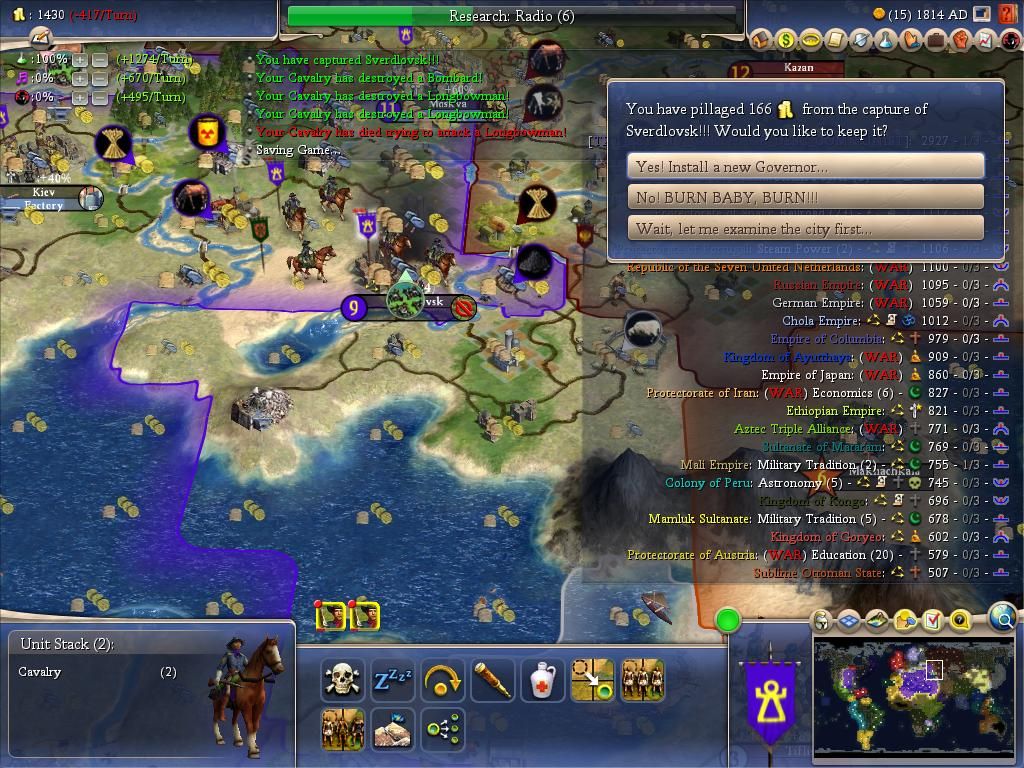
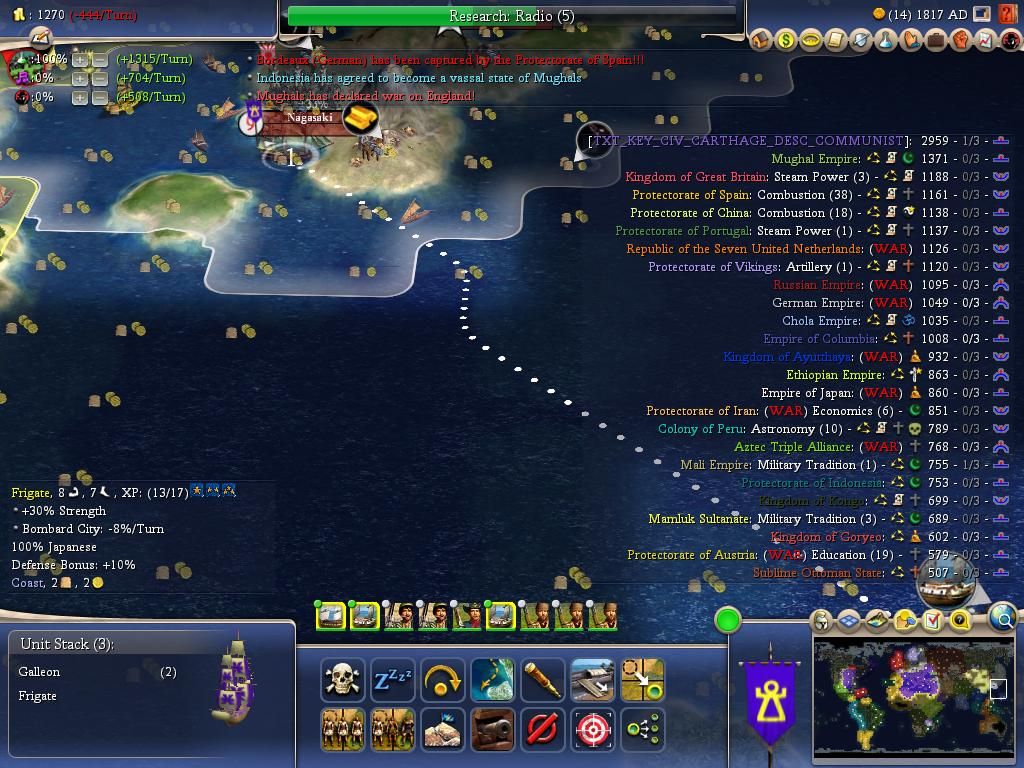
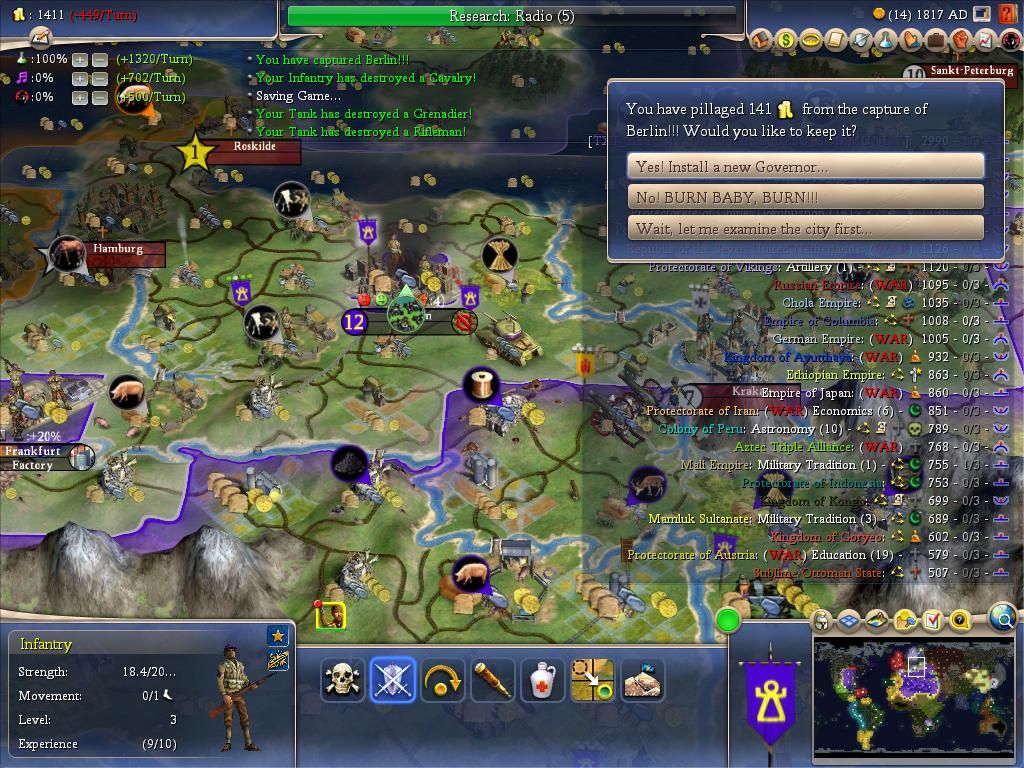
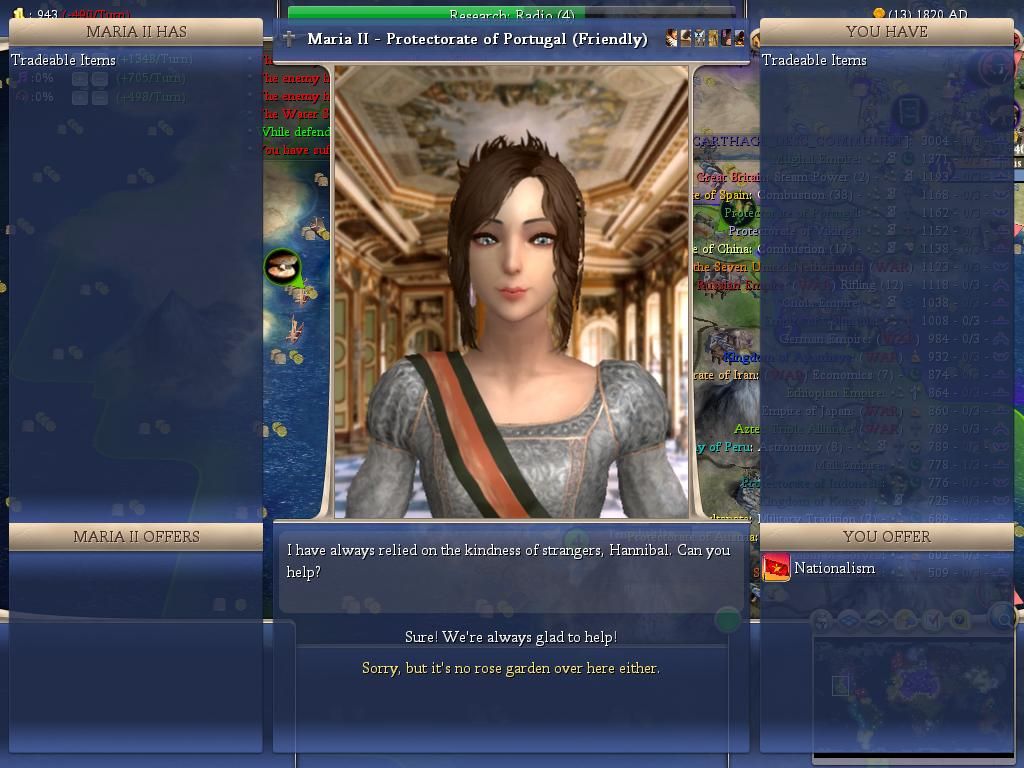
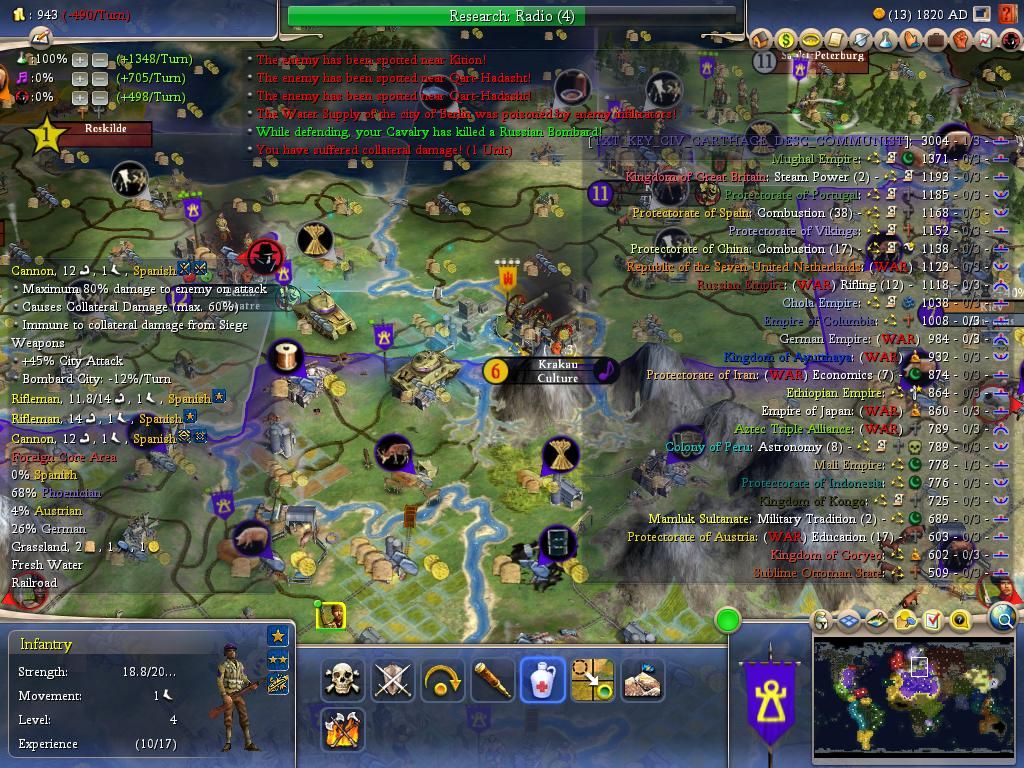
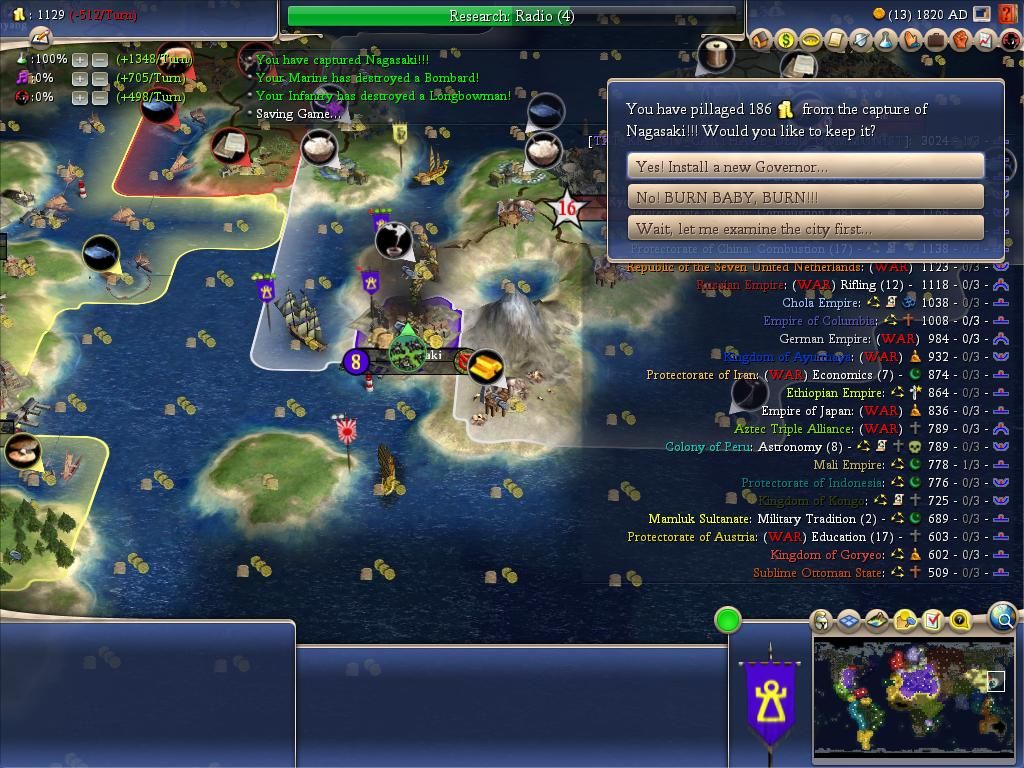
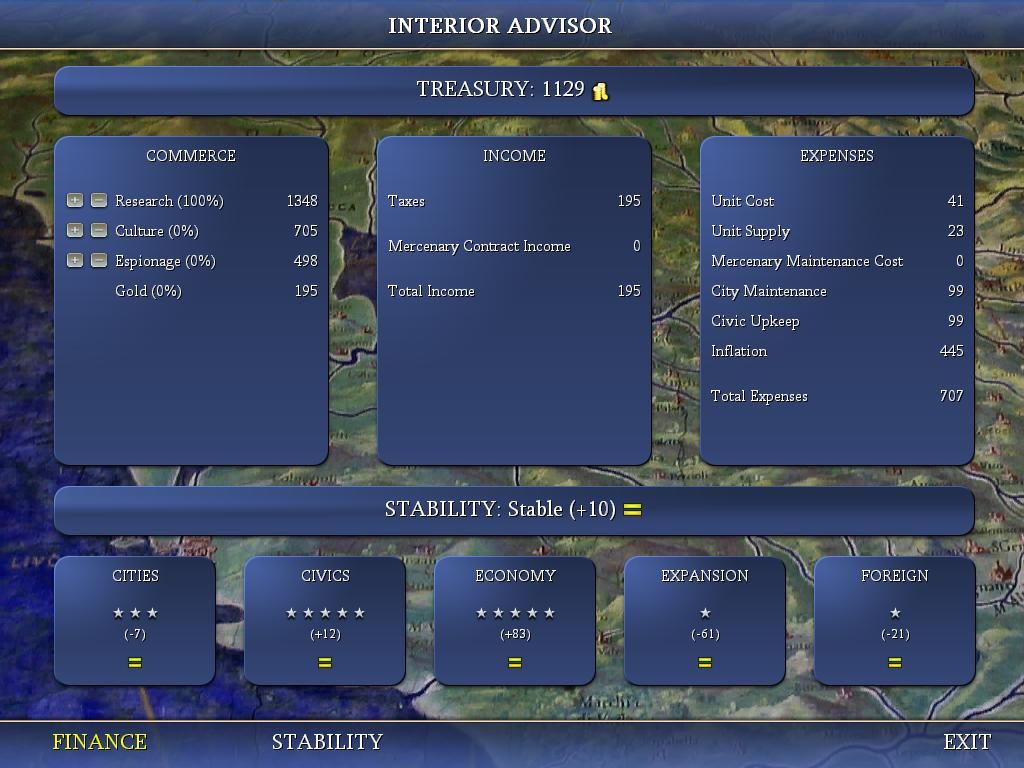
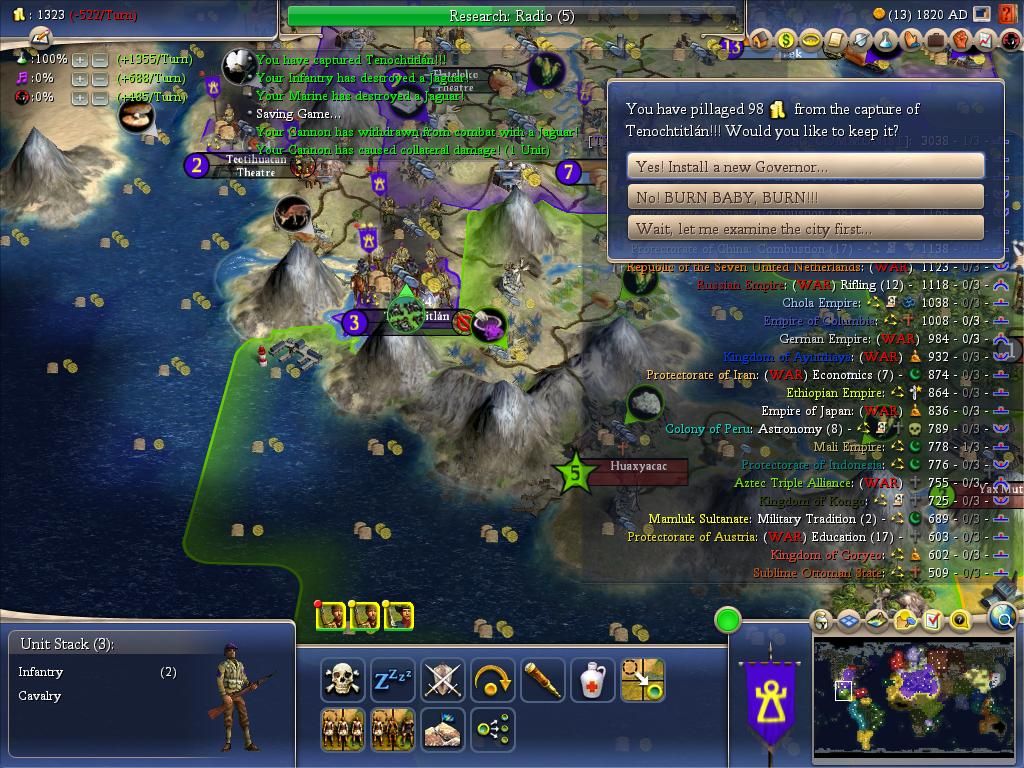


 ratio and kept warring, in order to continue farming kills, you could stay very stable and your Military would balance out your Expansion.
ratio and kept warring, in order to continue farming kills, you could stay very stable and your Military would balance out your Expansion.
